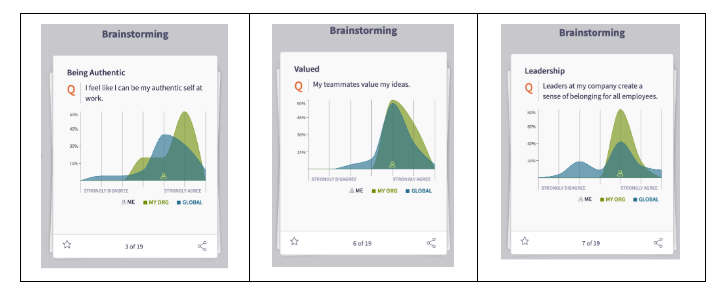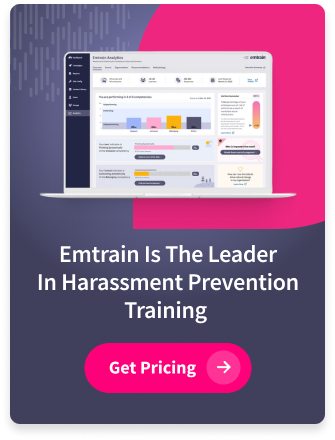In savvy companies, “belonging” is now the key concept defining the success of diversity and inclusion initiatives. Yet as organizations strive to create a greater sense of belonging, they stumble in being able to measure it. It’s far easier to start some new recruiting efforts to hopefully help improve your reported diversity statistics, or show your Board how your senior management ranks have grown with formerly underrepresented talent, but much harder to tell if you’re creating a true sense of belonging. One professional colleague recently told me that she’s “struggled with the metrics issue, as setting achievable goals is hard for this [as] much depends on how people feel.”
The Basics
One way of measuring is simply to ask: “How well do you feel like you belong in the organization?” and analyze the results. We’ve done this in ourselves in our Managing Unconscious Bias course and continue to do so.

The data can fall a little flat. Are good scores really good if the positive results shown are coming from a homogeneous population? And what if the underrepresented portion of your population doesn’t feel safe reporting their true response? How might you measure other aspects of belonging to get a better view?
Beyond the Basics
Because of our CultureTech business, we’re lucky to have the captive attention of employees while they take mandated training (sexual harassment in CA, IL, CT, NY) and company directed training (managing unconscious bias, code of conduct), and to use social polling to create people analytics to measure various aspects key to culture.
How to measure belonging at work in the right way
Here’s what we’ve learned:
Companies gather employee feedback in a variety of ways. Many have used the formal and lengthy annual engagement survey to gather longitudinal data. We see more companies supplementing that with – or moving entirely to – the pulse survey a shorter and more frequent survey that is able to capture more discreet changes in sentiment more frequently. While people may prefer the shorter pulse survey, by design you’ll receive less information, and overdoing it will create survey fatigue.
Finding a balance between these two goals is key.
-
1. Measure at the right time
By embedding culture questions in a broader learning package, we feed two birds with one seed, as a client recently told us. This is great for efficiency when the value of employees’ time is at a premium. But more importantly, we think that our courses invite each learner to engage, always respecting their opinions, and focus them on awareness, empathy and the growth mindset. We believe that this cocooned environment will produce more authentic responses to our culture questions, as evidenced by the number of people who share personal stories in optional response open text questions. This is starkly different than answering the pulse survey when it comes around in email or Slack. We’re just on the cusp of being able to understand if learners respond to the same question differently in different arenas, and we continue to look for opportunities to measure this within our clients who are equally interested in unlocking the answer.
-
2. Measure with a 360० view
Asking about a range of viewpoints – about their own experience, their team, their manager, their senior management, their company, and supplementing these with open text questions, asking for more detail around their observations helps round out the belonging score. Belonging consists of being valued, being able to be your authentic self, and being respected – measure these across the range.

-
3. Measure with the right intentions
We’d be remiss if we didn’t mention that none of the above is particularly helpful if it isn’t done with authenticity. As described in the book, The Drama-Free Workplace:
“a key ingredient to a successful diversity program is authenticity. What I’ve seen over the years is organization after organization saying they are committed to diversity, but really only giving lip service to an initiative. What these organizations don’t realize is that being inauthentic not only means you’ll see no results when it comes to diversity, you’ll actually see negative repercussions for the insincere efforts.”
If you’re surveying people about belonging, but your leadership isn’t particularly vested in it being a priority, the whole effort will ring false and your responses will reflect it.
Next Steps
“Belonging” will continue to drive the standard for success across diversity and inclusion initiatives. Applying people analytics to capture data and an array of belonging measures will help provide the feedback and guidance you need to continually improve the employee experience. This data helps organizations understand the motivations behind certain behaviors, avenues for creating behavior change, and the implications of “bad” behavior.











